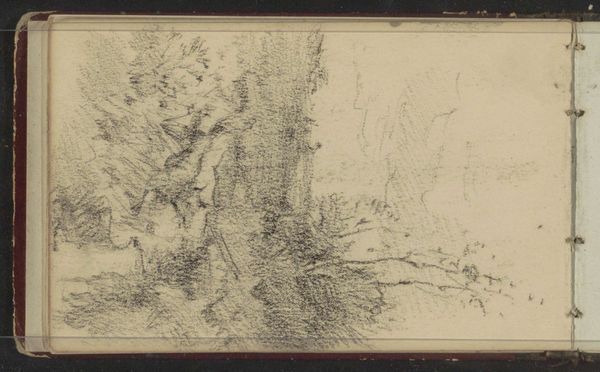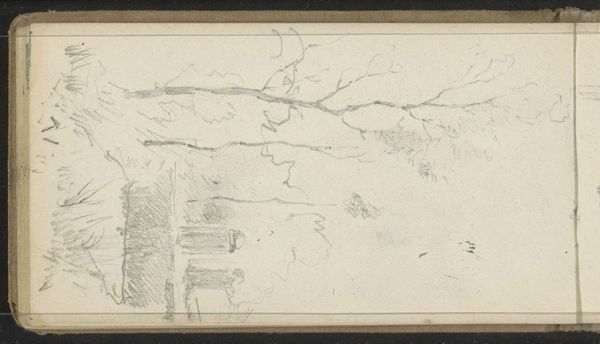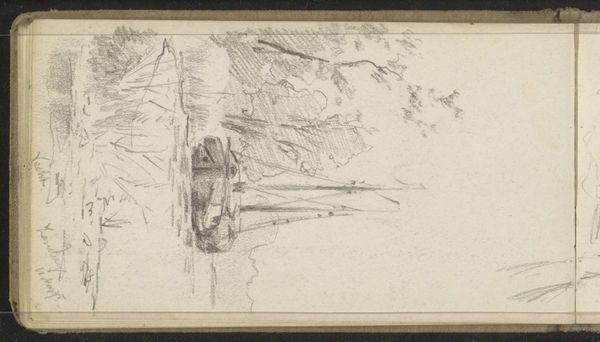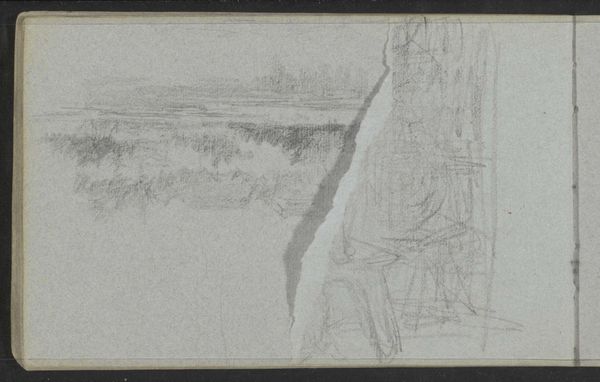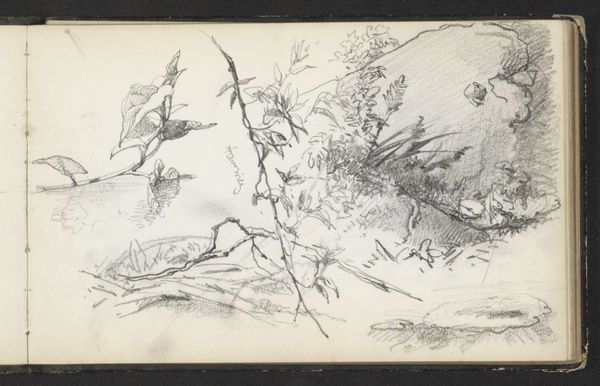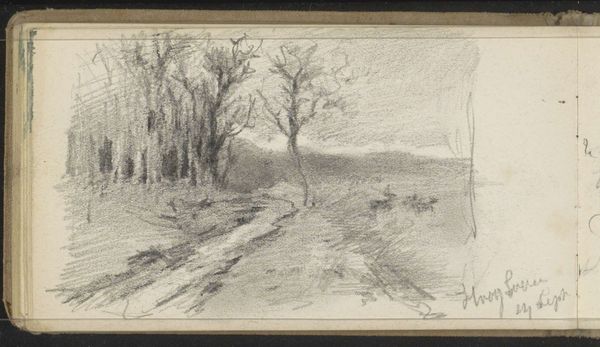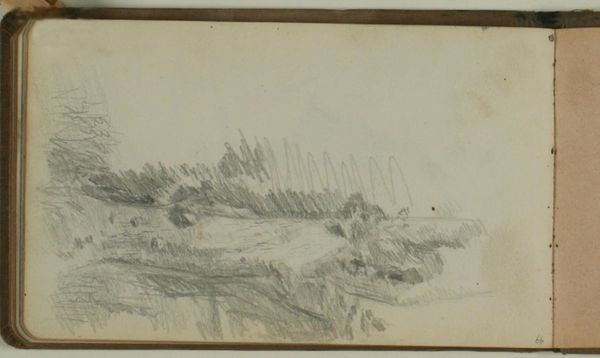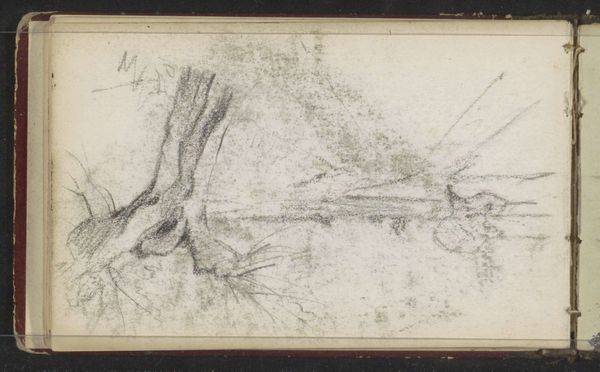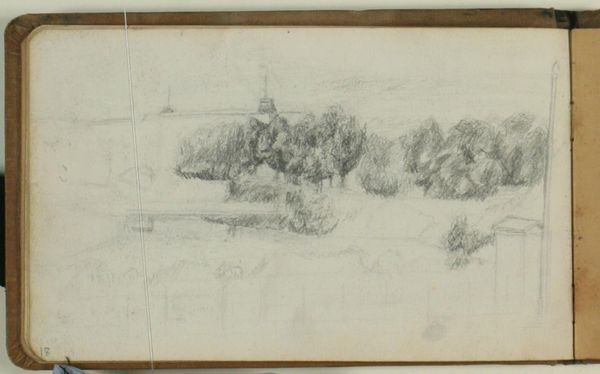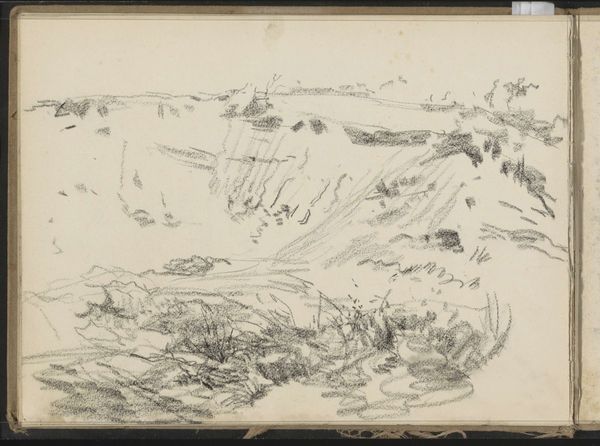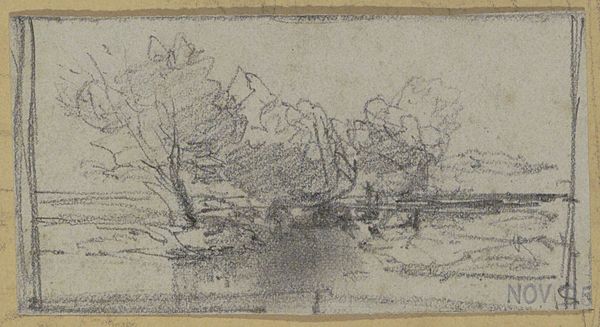
drawing, paper, graphite
#
drawing
#
landscape
#
paper
#
line
#
graphite
#
realism
Dimensions: height 101 mm, width 157 mm
Copyright: Rijks Museum: Open Domain
Curator: What a brooding atmosphere in this landscape, wouldn't you agree? The composition alone projects a rather somber quality. Editor: Indeed. Today, we are looking at “A Tree-Lined Avenue Along a Water’s Edge,” a graphite drawing on paper crafted by Willem Cornelis Rip circa 1891-1892. Its realism, conveyed in linear style, evokes a moment in nature's stillness. Curator: Observe how the artist employs line to structure the drawing; the verticality of the trees contrasted with the horizontal expanse of water establishes a formal dichotomy. Semiotically, the trees, clustered together, propose a dialogue between strength and fragility. Editor: It's worth considering that in late 19th-century Netherlands, the art world witnessed the rise of The Hague School. Did Rip engage with similar Realist trends depicting ordinary scenes, capturing rural or urban experiences, to promote democratization by mirroring common social experiences? Curator: Doubtlessly. The work embodies this cultural interest of observing real surroundings but goes much further than documentary illustration, doesn’t it? Editor: In terms of technique, Rip's visible layering with the graphite provides textural richness despite the picture's spare approach, evoking a tactile relationship with both paper and observed landscape. Curator: Precisely. That tension within the materiality mirrors larger aesthetic concerns of that period—attempting balance, for instance, between pure mimesis and more impressionistic sensory registrations, while also reflecting how the late 19th century’s public sphere balanced the visible with the ephemeral, the corporeal with the abstract. Editor: Thinking about audience expectations, it’s fascinating how, despite the scene's perceived realism, the actual effect verges into mood. Curator: Perhaps Rip urges viewers to see through structure, while remaining fixed by its visible reality. Editor: Right—it highlights the intrinsic drama embedded within what at first glance seems like placid scenery. Thank you both for your company. Curator: Yes, indeed. Art such as this helps us reconsider the dialectics of perception and reality in viewing a simple vista.
Comments
No comments
Be the first to comment and join the conversation on the ultimate creative platform.
